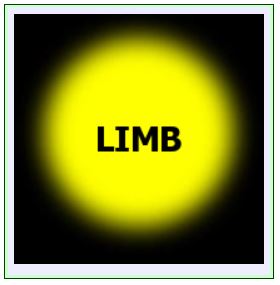VISIONS - SHORT -
MEMORABLE - VISUAL - VERBAL
Syntheses - Clinical
- Fine Arts - Galaxies – Carousels – Overviews – Word Roots
LIMB
LIMBUS … ARCUS SENILIS
TERMINOLOGY:
LIMB LIMBO LIMBUS LIMBIC LIMIT EXTREME EDGE BORDER EYE IRIS ARCH ARCHIVE ARCUS AGING SENILITY SENILE CHOLESTEROL CRETINISM DOWN SYNDROME
SIGNS – SEMIOLOGY – SIGNIFICANCE
LIMB dysmorphogenesis is relatively frequent and descriptions should define the affected segments and “sort” of alterations. Each affected limb should be presented separately and indicate presence or absence of symmetry. Furthermore, patterns and symmetry of palmar-volar skin ridge patterns and flexion creases (dermatoglyphics) should be included.
LIMBIC SYSTEM (Poetically). Personally, I believe that the name “Limbic” is perfect - an ideal term to denote cerebral components dedicated to “marginalize” into “limbo” our emotions and retain them subconsciously – put away from your mind. Apparently, the Limbic System (more of a collection of functions than structures) transfers our “emotions” (memories) from the conscious to the autonomic (sub-conscious) nervous system. “Buried away” applies not only to such emotions but to the Limibic System itself for it is also “buried” deep under the brain. Formally, the Limbic System is involved in the processing and transfer of emotions such as sexual arousal or stress to be modulated into autonomic and neuro-endocrine and endocrine nervous system responses.
IRIS – LIMBUS - ARCUS SENILIS. A sign (a white-gray arc in the periphery (limbus) of the iris) may signal an association with elevated levels of cholesterol, premature aging, and familial hyperlipidemia, among other causes.
FUN PART - GALLERIES
(More in PandoraWordBox and Clinical Eye Openers)
NEXT TIME: Limb - Tetraphocomelia
W. Wertelecki, M.D.
20211230
20211230






